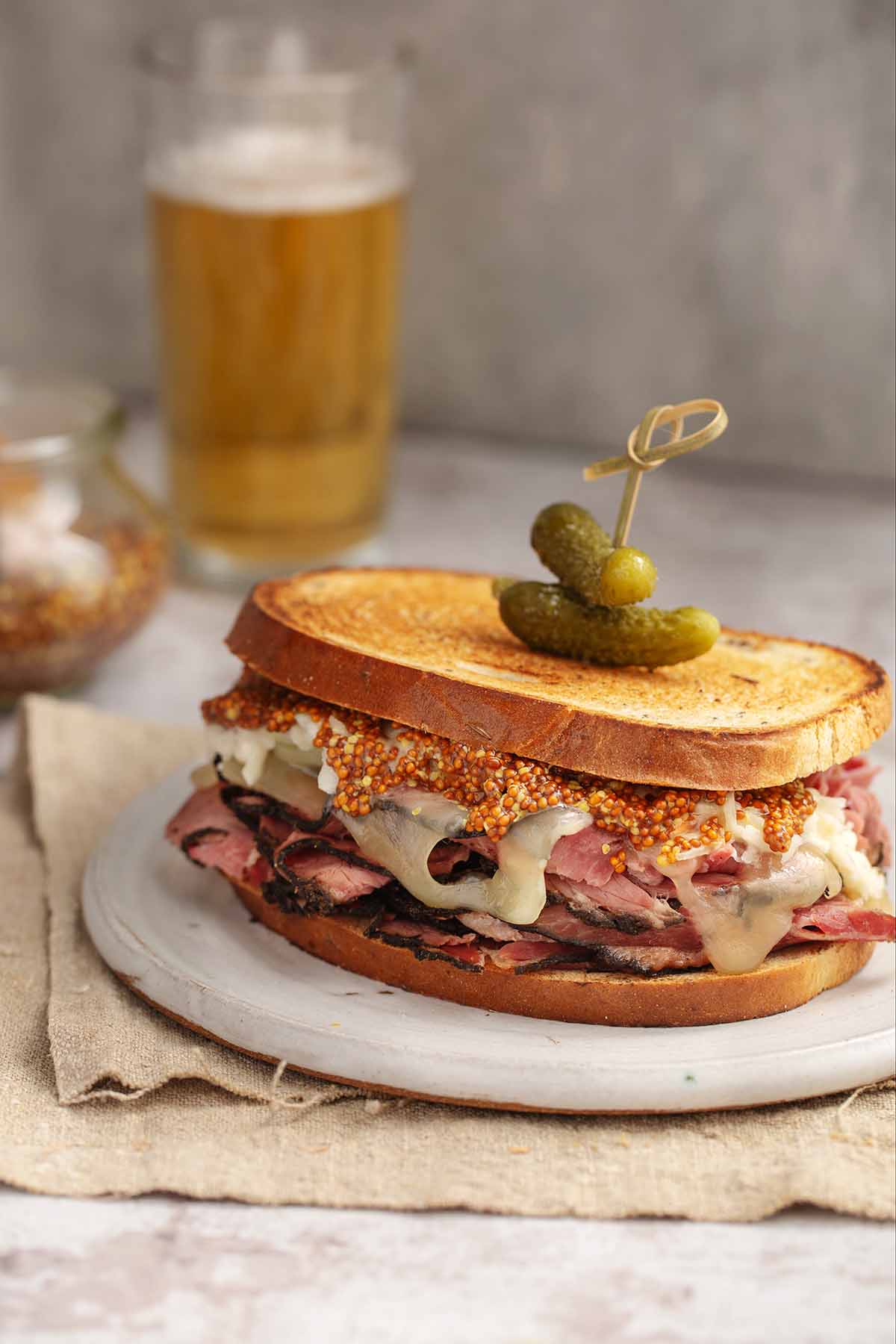
Jump To
- TL;DR (Quick-Answer Box)
- Why This Recipe Works
- Notes on Ingredients
- Visual Step-by-Step Guide: Homemade Pastrami
- Shortcuts & Variations
- Your Pastrami Questions Answered
- Pro Tips
- What to Serve with Homemade Pastrami
- Storage & Reheating
- More Amazing Cured Meat Recipes
- Share Your Pastrami Story
- Homemade Pastrami Recipe
- Recipe Testers’ Reviews
TL;DR (Quick-Answer Box)
- What it is: Oven-roasted homemade pastrami—a succulent, spice-rubbed beef brisket brined for five days, then steamed in the oven to tender perfection without a smoker.
- Why you’ll love it: Skip the deli lines! This easy, no-fuss method delivers rich, smoky flavor and melt-in-your-mouth texture right from your own kitchen.
- How to make it: Brine the beef brisket for 5 days, rub it down with a bold mix of black pepper, coriander, and smoked paprika, then steam-roast it in the oven until gloriously tender.

Let’s talk pastrami. I know what some of you are thinking: “David, in the oven?!” I can practically feel deli aficionados raising a collective eyebrow. In his must-read book, Save the Deli, journalist and cultural writer David Sax scandalized readers when he wrote that the smoky flavor of pastrami in many heralded delis comes from sizzling fat in the pan, not wood.
Like all great pastrami, this starts with brined beef brisket. But this version calls for steam-roasting in the oven for fall-apart tender results, and a secret for cutting down that brine-cooling time. Trust me, the melt-in-your-mouth magic you’re about to create? Absolutely worth it.
Featured Review
All I can say is WOW! I live in Sarasota FL, and good pastrami is hard to find down here so I decided to make my own. I precisely followed the recipe notably doing the smoker variation and using David’s “Secret Rub” and was absolutely blown away. My neighbor joked that I need to open a deli. Highly recommend!!
Mark Hintz

Why This Recipe Works
This pastrami may look fancy, but it’s packed with kitchen smarts that make it utterly foolproof. First, the five-day brine is non-negotiable for flavor and tenderness. And here’s a game-changer: my trick of boiling half the brine then adding ice cools it instantly—no more hours of waiting around. We then steam-roast the brisket in the oven, a method that delivers melt-in-your-mouth results and echoes how some top delis achieve their “smoke.” Plus, smoked paprika provides that classic smoky depth without a smoker. Finally, weighing your kosher salt is critical for a perfect brine; trust me, I’ve seen the salty disasters. This tested approach ensures you get incredible homemade pastrami every time.
Notes on Ingredients
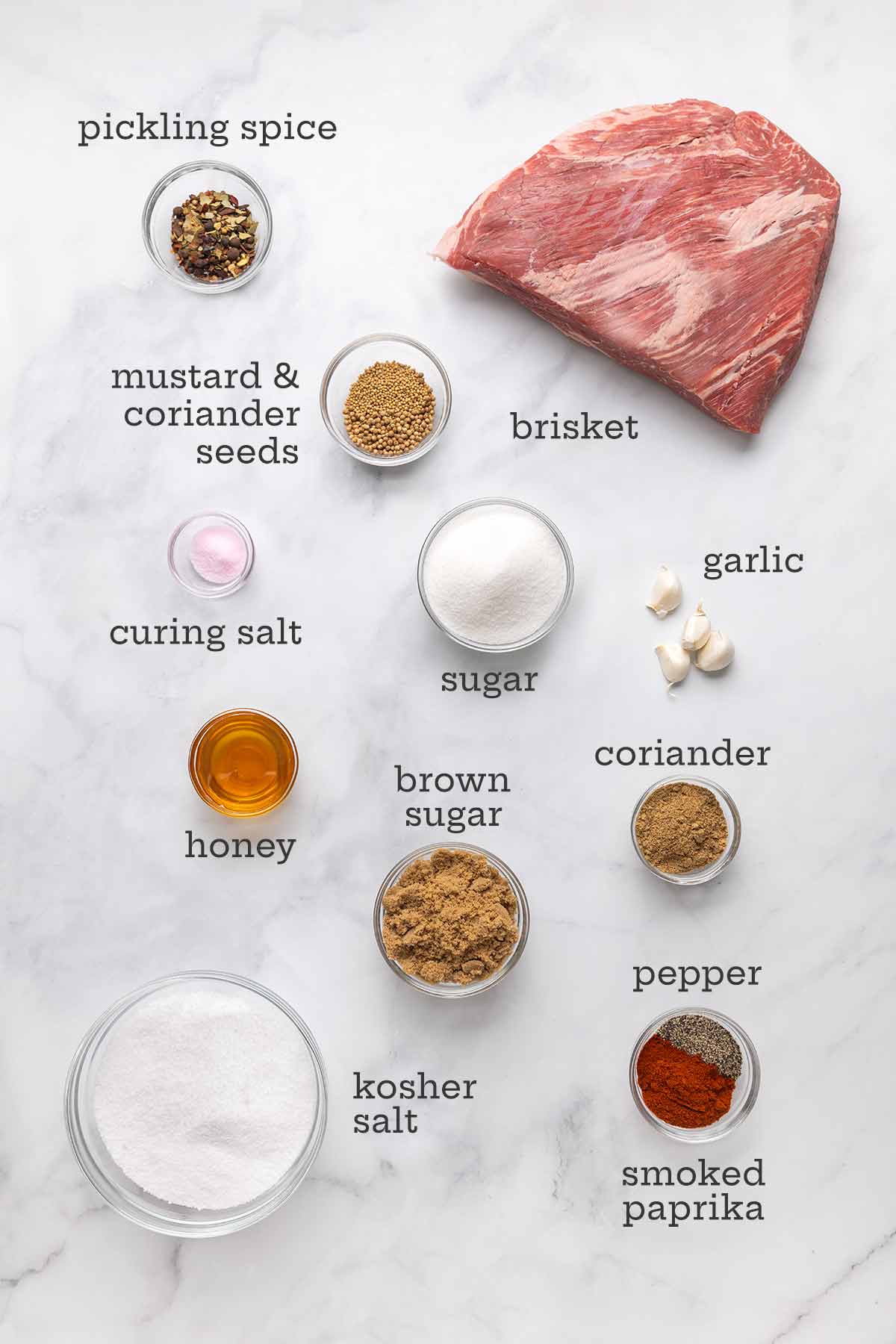
- Beef Brisket: Flat cut (first cut) or point (second cut)? Your call. The point has more marbling, more fat, more flavor. Just ensure a 1/4-inch fat cap remains for juicy perfection.
- Pink Curing Salt: Don’t even think of skipping this! It’s the magic behind that signature pink hue, but more importantly, it’s essential for food safety during curing and preserving the meat’s texture.
- Sugar and Honey: This sweet trio—granulated sugar, brown sugar, honey—in the brine isn’t just for flavor; it also helps to tenderize the meat. Just avoid any honey that’s too bossy in flavor.
- Kosher Salt: The foundation of your brine. You must weigh the salt. Seriously. Salt crystal sizes vary wildly by brand, and measuring by volume can turn your perfect pastrami into a salty disaster.
- Smoked Paprika & Coriander (for the Rub): These aren’t just spices; they’re the secret to a gentle, smoky flavor in your oven-baked pastrami. While paprika brings the “smoke,” coriander adds a warm, citrusy counterpoint that makes the rub work.
Visual Step-by-Step Guide: Homemade Pastrami
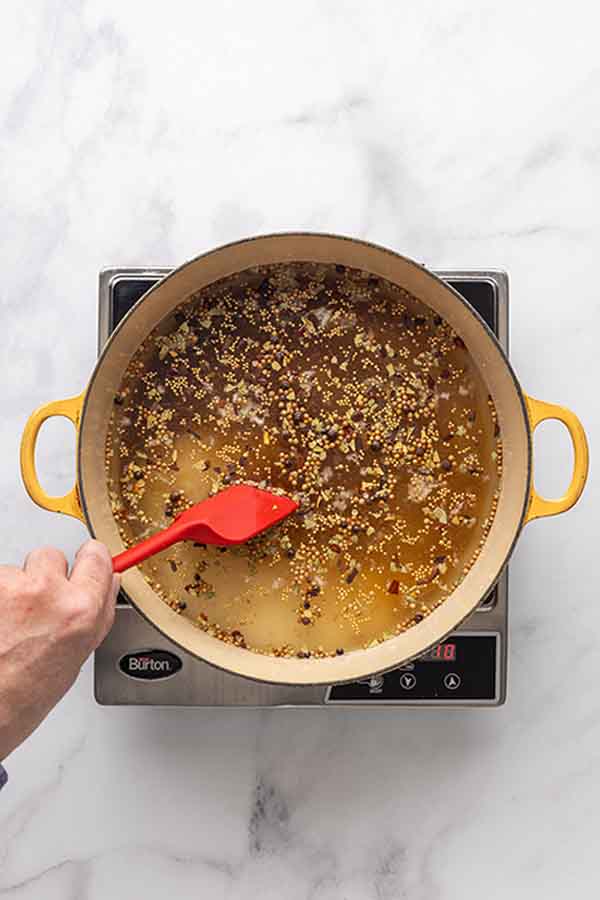
- Fill a large pot with 3 quarts of water. Add the sugars, honey, spices, and garlic.
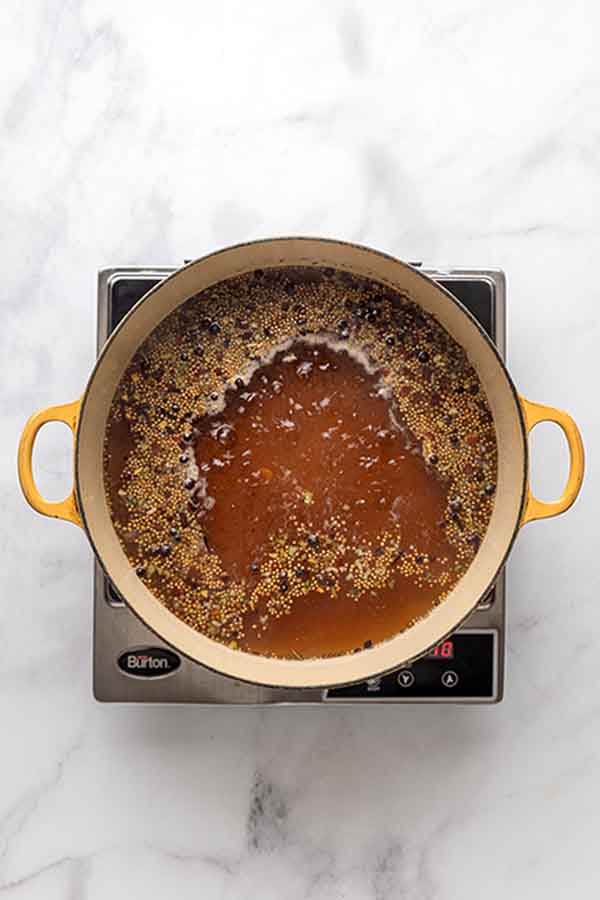
- Bring to a boil over high heat. Stir until the salt and sugar are fully dissolved.
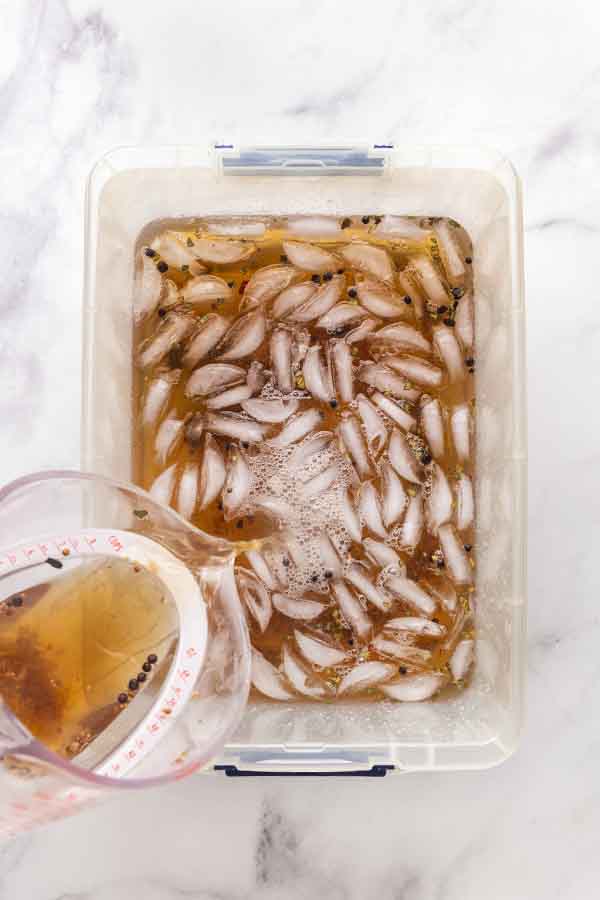
- Add 3 quarts of ice-cold water to a large container. Pour the hot brine into the container and stir until cold.
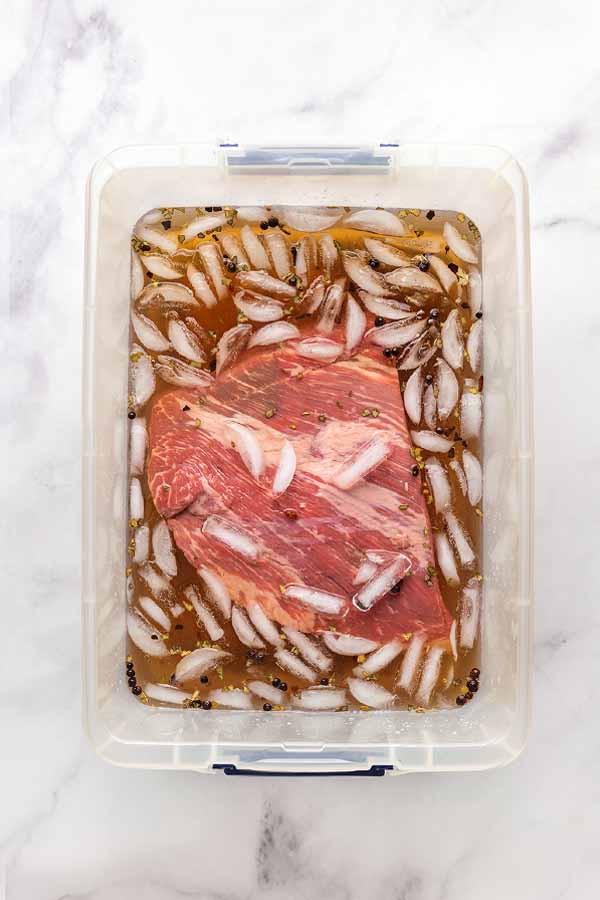
- Trim the brisket, if necessary. Place the brisket in the cold brine.

- Dunk the brisket in the brine, using a heavy object to keep it submerged.
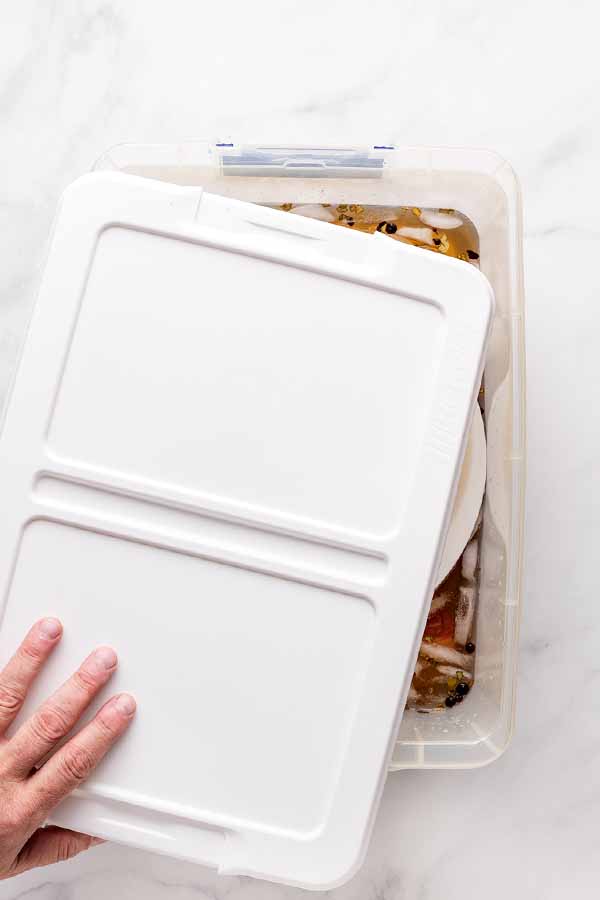
- Cover and refrigerate for 5 days, flipping the brisket once each day.

- To make the spice rub, combine the coriander, pepper, and paprika in a small bowl. Dry the brisket with paper towel. Rub 1/4 cup of spice rub on the non-fatty side of the brisket, then flip it and rub the fatty side with the remaining spice blend. Let it rest for 2 hours at room temperature.
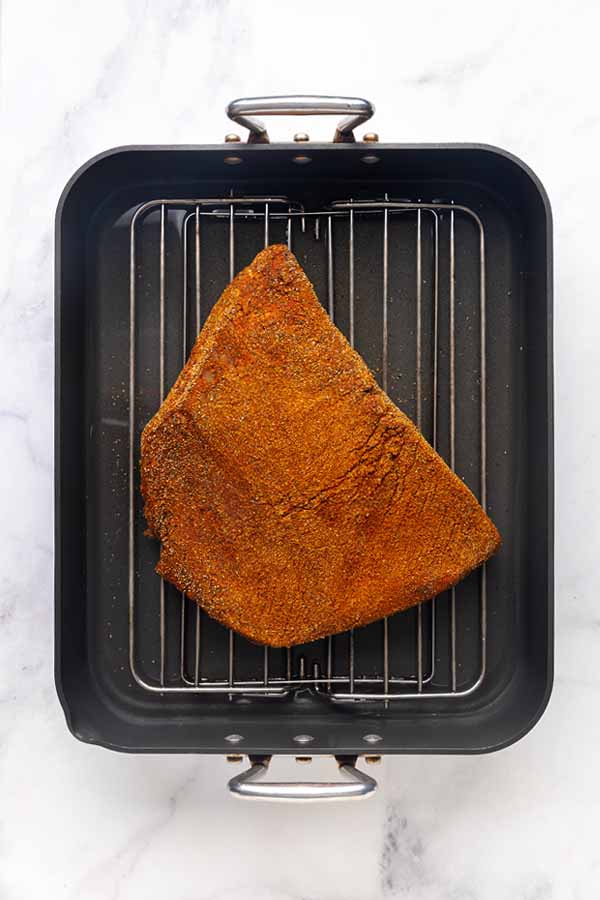
- Preheat the oven to 300°F. Set a rack inside a large roasting pan and pour 4 cups of cold water into the bottom of the pan. Set the brisket on the rack, fatty side up.
- Cover with a double layer of aluminum foil. Bake until the internal temperature reaches 200°F. Let rest for at least 30 minutes. Slice the brisket against the grain into thin slices.
Shortcuts & Variations
My Pastrami Spice Rub Variation
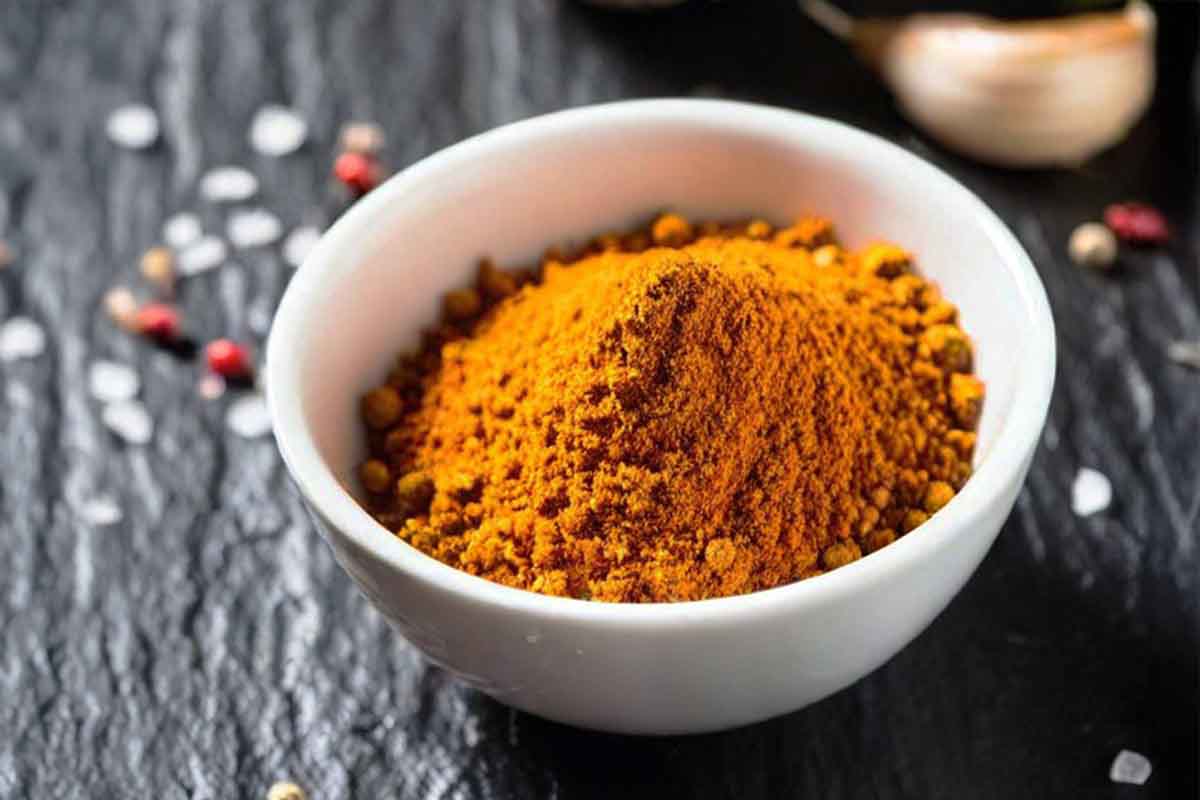
Sometimes, I want a bit more oomph for the coating on my pastrami, so I use my secret recipe spice blend (well, not so secret now!) Use this in step 5 below.
Ingredients
- 2 tablespoons ground coriander
- 2 tablespoons ground black pepper
- 1 tablespoon mustard powder
- 1 tablespoon garlic powder
- 1 tablespoon smoked paprika
- 2 tablespoons brown sugar
- 1 tablespoon onion powder
Instructions
- This yields about 3/4 cup of rub, more than enough to cover a 4-pound brisket generously. The quantities can be tweaked based on your preference for certain flavors. For instance, if you enjoy a more pronounced garlic or smoky taste, go for it and bump up the garlic powder or smoked paprika.
How to Smoke Pastrami (Variation)
Want that true-blue smoked pastrami experience? It takes more time than the oven method, sure, but that resulting depth of flavor is absolutely worth the effort. Since smokers and grills vary widely, these are general guidelines, but just remember the golden rule: low and slow is the way to perfection.
- Prep the Brisket: Prepare the homemade pastrami recipe below through step 5, omitting the paprika in the spice rub.
- Smoke Low & Slow: In an outdoor smoker or grill, smoke the meat, fatty side up, at 225°F (107°C) for 6 to 8 hours, or until it reaches an internal temperature of 160°F (71°C) to 175°F (79°C). Oak, maple, pecan, hickory, or fruit woods may be used, depending on availability and preference. (Avoid mesquite, as it gives a harsh flavor to long-smoked meats.)
- Finish in the Oven: Preheat the oven to 300°F (149°C). Place the brisket in a roasting pan and tightly cover the brisket and pan with a double layer of aluminum foil. Bake until the meat reaches an internal temperature of 200°F (93°C), 1 1/2 to 2 hours.
Want to Save This?
Your Pastrami Questions Answered
The most significant difference between the two types of meat lies in the cooking process. Corned beef is spice and salt-cured and then typically boiled or steamed. Pastrami is seasoned similarly, generally peppered heavily, and then smoked–but it can also be slow-baked as in this recipe.
Why, I’m glad you asked. Despite what many think, corned beef did NOT originate in Ireland. (Gasp, I know!) The first generations of Irish immigrants to the US developed the recipe out of necessity. A Saint Patrick’s Day feast in Ireland included boiled bacon, but the immigrants were too poor to afford pork and bacon products. Instead, they used a more affordable cut of meat: beef brisket.
As stated in The Little Foods of the Mediterranean by Clifford Wright, pastrima was first made in Turkey during the Ottoman Empire and made its way along the spice route to Romania. Romanian Jewish immigrants, who coined it “pastrami,” brought the recipe to the United States, and the meat became famous in New York City.
It’s traditionally made from brined and cooked beef brisket but it can be made from goose, goat, and mutton as well.
The crystal size of kosher salt can vary dramatically from brand to brand. Salts with smaller, finer crystals, such as Morton Kosher Salt, take up less space than larger crystals, such as Diamond Crystal. Measuring by weight ensures that the saltiness of the brine is consistent regardless of which brand of salt you use.
Pastrami is a good source of protein and essential nutrients, including iron and vitamin B12, so it can be included as part of a healthy diet. It is high in saturated fat and sodium, though, so it should be enjoyed in moderation.
Pro Tips
- Let your butcher do the work
Ask them to trim the brisket’s fat cap down to 1/4 inch (6 mm) to save time (and mess). - Keep it down
Having trouble submerging the brisket? Set a sealed bag filled with a plate or canned goods on top to weigh it down. - Brisket too big? No problem
If the whole thing won’t fit in your brining container, just cut it in half. - Slice like a pro
For neat, thin slices, chill the cooked pastrami for a couple of hours before cutting. - Allergy-friendly bonus
This recipe is naturally gluten-free and dairy-free—just double-check your spices and curing salt, since some blends can contain hidden gluten, anti-caking agents, or dairy-derived fillers.
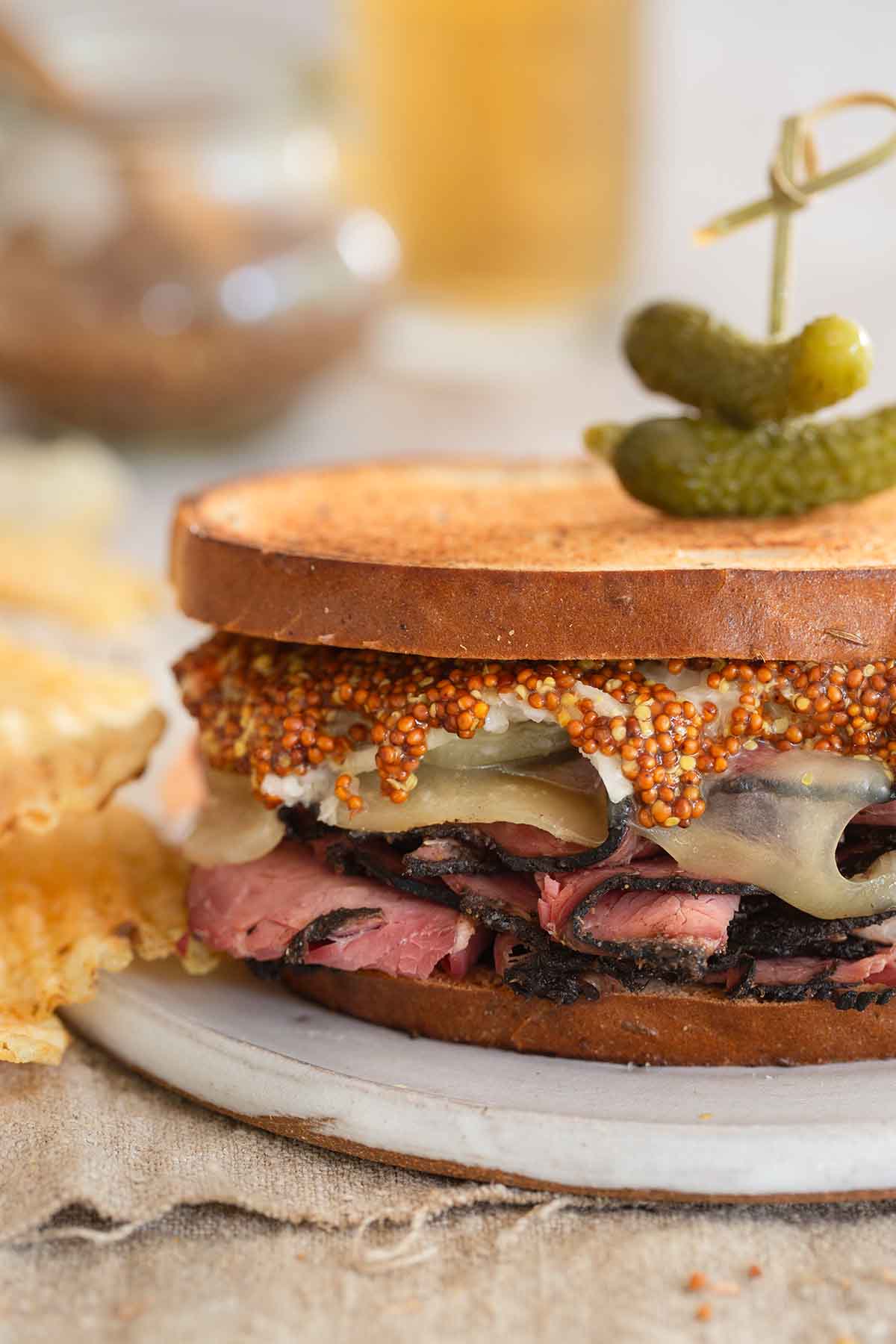
What to Serve with Homemade Pastrami
You’ve made this glorious pastrami; now let’s serve it right. It’s about an experience, not just a meal.
- The Classic Sandwich: A good pastrami sandwich needs freshly baked rye bread, classic yellow mustard, and melty Swiss. Add mayo, lettuce, and tomato for a cold one, or skip ’em for hot.
- Full Deli Spread: Pair your pastrami with crisp quick dill pickles, creamy coleslaw, or tangy potato salad. Steak fries are extra luxe.
- Reuben Revival: Transform it into a Reuben with sauerkraut, a great melting cheese (Comté or Swiss!), and Dijon, all grilled on rye. Pure bliss.
- Breakfast MVP: Chop leftover pastrami for a killer potato hash, topped with a fried egg. Or, for the adventurous, pastrami eggs Benedict awaits!
- Beyond the Expected: Thinly slice pastrami for a peppery arugula salad with pesto vinaigrette, or feature it on an elevated charcuterie board with artisanal cheeses and crusty olive bread.
Storage & Reheating
Fridge: Tightly wrapped in plastic or foil, your pastrami is good in the fridge for up to 1 week. Keep it sealed to fend off dryness and unwelcome fridge aromas.
Freezer: For longer love, portion and wrap individual servings, then stash them in the freezer for up to 6 months.
Reheating: Thaw frozen pastrami in the fridge overnight. To gently bring it back, steam it over simmering water for a few minutes until tender. Or, wrap it loosely in foil and warm it in a low oven (around 250°F / 120°C). Skip the microwave unless you’re a fan of rubbery meat—and, come on, who is?
Share Your Pastrami Story
If you braved the brine and came out on the other side with homemade pastrami, I want to hear about it. Leave a review, drop a star rating, and upload your proudest photo in the comments below. Whether you went oven or smoker, deli-style or Reuben remix.–David

Homemade Pastrami
Equipment
- 1 2-to-3 gallon food-safe container tight-fitting lid
Ingredients
For the brine
- 3 quarts water, for the brine
- 10 ½ ounces kosher salt
- 1 ¾ teaspoon pink curing salt, (a mixture of 6.25% sodium nitrite, salt, and a touch of red dye, also known as Prague Mix #1 or Instacure #1 or Curing Salt #1)
- 1 cup granulated sugar
- ½ cup firmly packed dark or light brown sugar
- ¼ cup honey
- 2 tablespoons pickling spice
- 1 tablespoon whole coriander seeds
- 1 tablespoon yellow mustard seeds
- 4 cloves garlic, minced
- 3 quarts total of ice and cold water, for cooling the brine
- one (3- to 4-pound) beef brisket
For the spice rub
- ¼ cup ground coriander
- 2 tablespoons freshly ground black pepper
- 2 tablespoons smoked paprika
- 4 cups cold water, for humidifying the oven
Instructions
Make the brine
- Fill a large stock pot with 3 quarts water. Add the 10 ½ ounces kosher salt and 1 ¾ teaspoon pink curing salt (it's essential to weigh the kosher salt for accuracy rather than go by a volume measure, trust me), 1 cup granulated sugar and ½ cup firmly packed dark or light brown sugar, ¼ cup honey, 2 tablespoons pickling spice, 1 tablespoon whole coriander seeds, 1 tablespoon yellow mustard seeds, and 4 cloves garlic.
- Bring to a boil over high heat, stirring often to dissolve the salt and sugar in the fully. Immediately remove the pot from the heat once the brine boils.
- Add the 3 quarts (12 cups) of ice and cold water to a sturdy 2-gallon (or larger) food-safe container with a tight-fitting lid that fits in your fridge. Pour in the brine. It should be instantly cool.
☞ TESTER TIP: You want a large-enough container that can fit the brisket, brine, and a plate or weight on top to keep it submerged. Don’t use disposable pans—they tend to leak and don’t keep the meat fully immersed.
- Trim excess fat from the one (3- to 4-pound) beef brisket leaving a 1/4-inch thick layer, which is important for flavor and keeping the meat juicy. Dunk the brisket in the cooled brine.
- Refrigerate the brisket for 5 days, stirring the brine and flipping the meat each morning. If any part of the brisket is touching the container (or another brisket) make sure to rotate it to expose all of the meat to the brine.
Make the spice rub
- Mix together the ¼ cup ground coriander, 2 tablespoons freshly ground black pepper, and 2 tablespoons smoked paprika in a small bowl. (Or mix together my recipe for the spice rub above.)
Roast the pastrami
- Remove the brisket from the brine and pat it dry. Rub 1/4 cup of the spice rub evenly on the non-fatty side, then flip the brisket and rub the remaining spice mixture onto the fatty side.
- Let the brisket come to room temperature, about 2 hours.
- Crank the oven to 300°F (149°C). Pour 4 cups cold water into the bottom of a 12-by-15-inch roasting pan. Set a wire rack inside the pan.
- Place the brisket on the rack, fatty side up. Tightly wrap the brisket and roasting pan with a double layer of aluminum foil.
- Bake until the brisket reaches an internal temperature of 200°F (93°C). This should take about 1 hour per pound, or 3 to 4 hours total. Let the meat rest for at least 30 minutes before slicing.
☞ TESTER TIP: If you want to make sandwiches, chill the pastrami in the fridge for several hours or overnight.
- Without trimming the fat, carve the pastrami against the grain into slices as thin as possible without the meat falling apart. Keep the meat tightly wrapped in plastic in the fridge for up to 1 week or frozen for up to 6 months.
Notes
- Time-saving tip—Save time and have your butcher trim the fat cap on the brisket to 1/4-inch (6 mm).
- Submerging the brisket—If you find it difficult to keep the brisket submerged in the brine, place something heavy (a plate of a few canned goods are great for this!) in a sealed plastic bag and set it on top of the brisket to weigh it down.
- Make it fit—If your brisket is too big to fit into the brining container in one piece, cut it in half.
- Slicing pastrami—The meat will be easiest to slice after it has cooled. If you don’t need to serve it right away, pop it in the refrigerator for a couple of hours before slicing thin.
- Storage—Pastrami can be stored, tightly wrapped in plastic or aluminum foil in the refrigerator for up to 1 week or frozen for up to 6 months.
- Dietary—This homemade pastrami recipe is suitable for gluten-free and dairy-free diets.

Nutrition
Nutrition information is automatically calculated, so should only be used as an approximation.
Recipe Testers’ Reviews
Wow. Who knew making your own high-quality homemade pastrami could be so easy? This recipe made a lean, slightly spicy, smoky-tasting (from the smoked paprika) pastrami that certainly could hold its own with anything I’ve ever mail-ordered from New York. At less than $11/pound, it’s pretty economical, too (Katz’s Deli charges $12.50 a pound, unsliced, plus shipping).
Sourcing & Brining Notes
I purchased a 3 1/2-pound flat-cut brisket from Whole Foods and mixed up the brine mostly with ingredients I already had in my kitchen. The only unusual ingredient is the pink salt or Prague Powder #1, which is salt and 6% sodium nitrite. I got it online from The Spice House. I brined the meat in a large ceramic bowl (it wasn’t quite 2 gallons, but it was close enough) and weighted the meat with a plate. The brine is rather pungent, and I was glad to get it out of the fridge after the five-day brining period!
Cooking Process & Results
After removing the meat from the brine, I coated it with the spice mixture and, after 2 hours—during which time the meat came to room temperature and my daughter made three batches of cookies—I put the brisket in the oven and cooked it for 3 1/2 hours, or exactly 1 hour per pound. At this point, the thickest part of the meat was 200°F. The result was sublime: tender, spicy, and delicious.
A Note on Saltiness
My only critique is that I found it a touch too salty and wonder if you could cut back a bit on the kosher salt.
It’s pretty hard to believe that we cooked up homemade pastrami. Really. We made pastrami. Pastrami is something that you buy at a deli. But we really made pastrami.
Time & Equipment Considerations
Now, it’s not something that would be easy to make any ole time. You need time, and if you want to smoke it like we did, you need a smoker. And patience. If you have all of those things, and if you like pastrami, this is the recipe for you.
Serving & Slicing Suggestions
We liked slicing it far thinner than the recipe called for. We made an assortment of different sandwiches with the pastrami. Pastrami on rye with cole slaw and Russian dressing (where I grew grew up, this was called a “Pastrami Special”). And then there’s our version of a Reuben, with pastrami, sauerkraut, Comté cheese, and Dijon mustard on rye, grilled till golden with melty goodness.
Yield & Storage
The recipe makes quite a lot of pastrami. We’ll seal the rest in packages and freeze them so that the pastrami can be enjoyed in the future. I’m looking forward to it.
I made the oven version of this homemade pastrami recipe. I’ve had pastrami sandwiches at several of the best delis in New York City. This pastrami was very comparable in terms of flavor and smokiness.
First-Time Curing Experience
Never having cured meat before, I followed the instructions in the recipe precisely, and the pastrami turned out perfectly. Once the brine was made, it was simply a matter of turning the meat and stirring it once daily for five days.
Ingredient Sourcing Tip
I didn’t have pink curing salt in my pantry, so I ordered it online. The 4-ounce package provided enough for this recipe plus some leftovers, so unless you plan to do a lot of curing, purchase the smallest amount that is offered.
Authentic Deli Serving
To emulate the full New York experience, I served it on good rye bread with cole slaw and Russian dressing and some steak fries and pickles on the side. It was good to know that I can pretty much recreate that experience in my own kitchen!
Pastrami isn’t exactly what I’d call part of my native cuisine. In fact, I can’t say for sure whether I’d ever even eaten it before making this recipe. But I have brined a lot of meat and smoked a lot of meat, and I think I know what’s good. This was good! Just to be sure, I took it to a party with a bona fide New Yorker present to see if it met with his approval. His response was, “Apparently, I’ve been buying crappy pastrami all my life.” Everyone raved about it.
Curing Salt Clarification
I’d like to add a clarification on the ingredients. There is also a curing salt #2 out there, which contains sodium nitrate in addition to sodium nitrite, and that is not what you are looking for. You can buy curing salt #1 online from shops that cater to home sausage makers and hunters, as well as on Amazon.
Pro Tips for Smoking Pastrami
The authors don’t give much direction on how to smoke the meat, but I’ll add a few tips. When smoking brisket, whether for this recipe or anything else, you want to smoke it with the fat cap facing up the whole time. Don’t flip it. If you’re using an offset smoker with the firebox to the side, you may want to rotate the brisket 180 degrees during the cooking–but don’t flip it. The spice rub was perfect. No, it doesn’t need salt, as it’s soaked up plenty from the brine.
Creative Serving Ideas
I served this at home as a pastrami version of a Reuben sandwich. For the party, I made a sort of pumpernickel flatbread and let people top it with either Reuben toppings or just mustard and pickles, whichever they preferred. Leftovers went into a potato hash, which would make a nice breakfast with an egg on top. And I’ve seen a recipe for a pastrami eggs Benedict, which is calling my name—lots of good stuff to do with this delicious smoked meat.
Since real pastrami is unavailable where I live, I’ve been looking for an excellent homemade pastrami recipe for a long time. Needless to say, I was thrilled to try this recipe.
Dual Cooking Methods: Oven vs. Grill
I had a very large brisket (about 7 to 8 pounds), so I cut it in half and made half in the oven and the other half on my gas grill. I’ve pickled briskets many times in the past, and this recipe is pretty straightforward. I pickled the brisket for 6 days, then cut it in half and followed the instructions exactly.
Oven vs. Grill Comparison
The pastrami that I cooked on the grill was much tastier than the one baked in the oven. I thought the oven-baked one was okay but didn’t compare to the grill-cooked one. The grill-smoked pastrami smelled better, tasted better, and was more tender.
Brisket Fat Cap Reminder
I also think it’s important not to use a lean brisket. Look for—or ask your butcher for—a brisket with a 1/4-inch layer of fat on top.



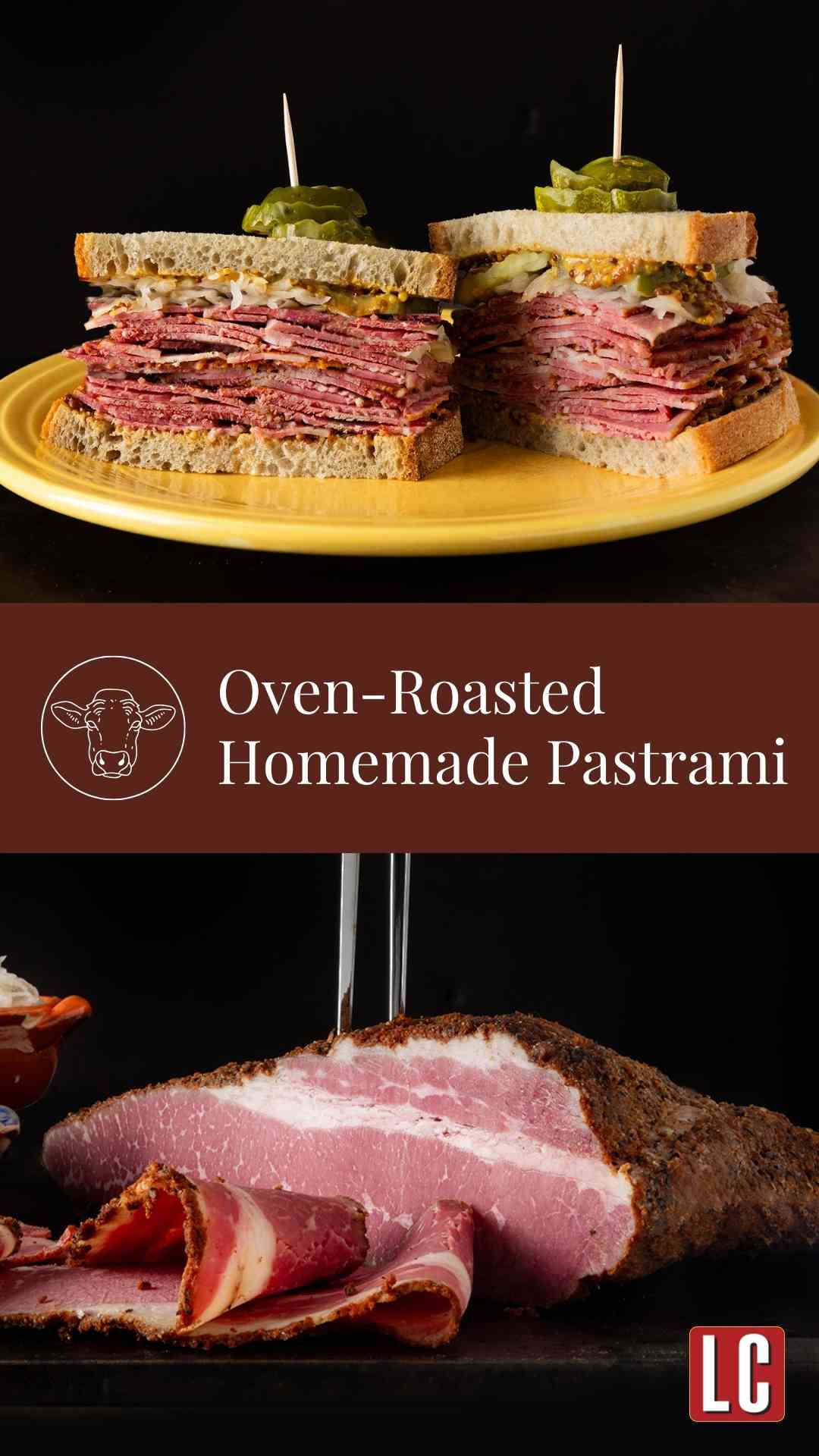
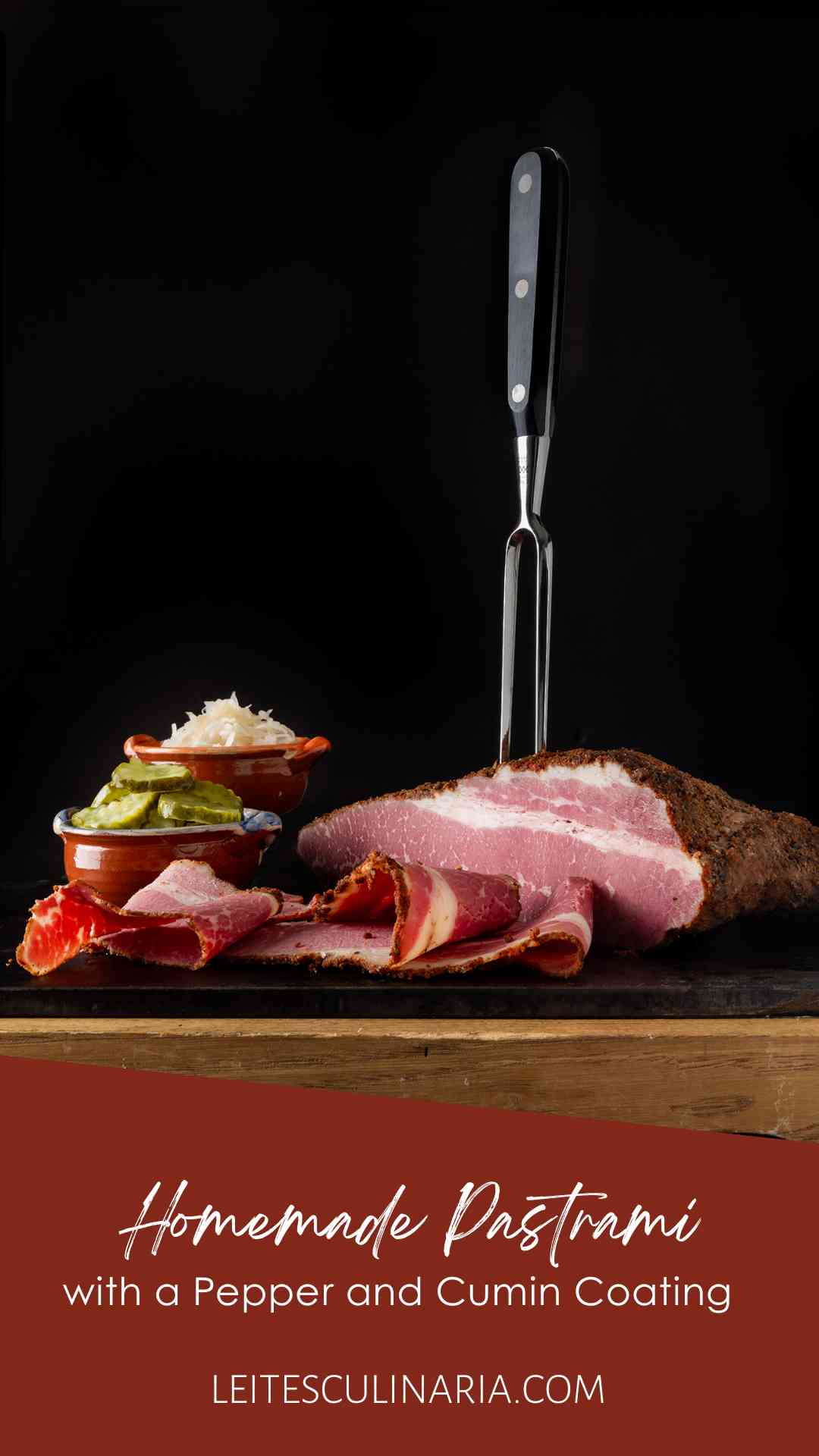
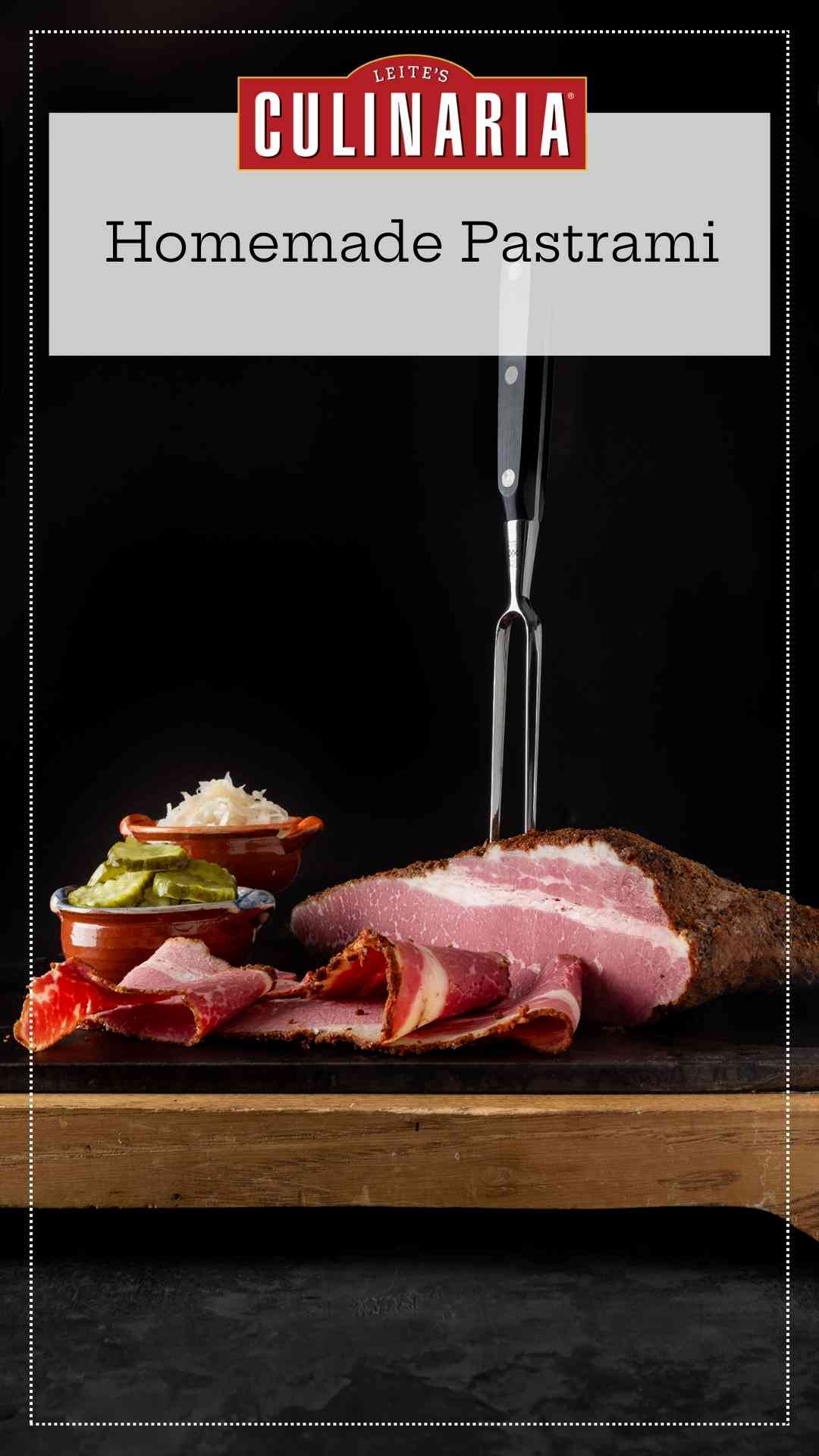
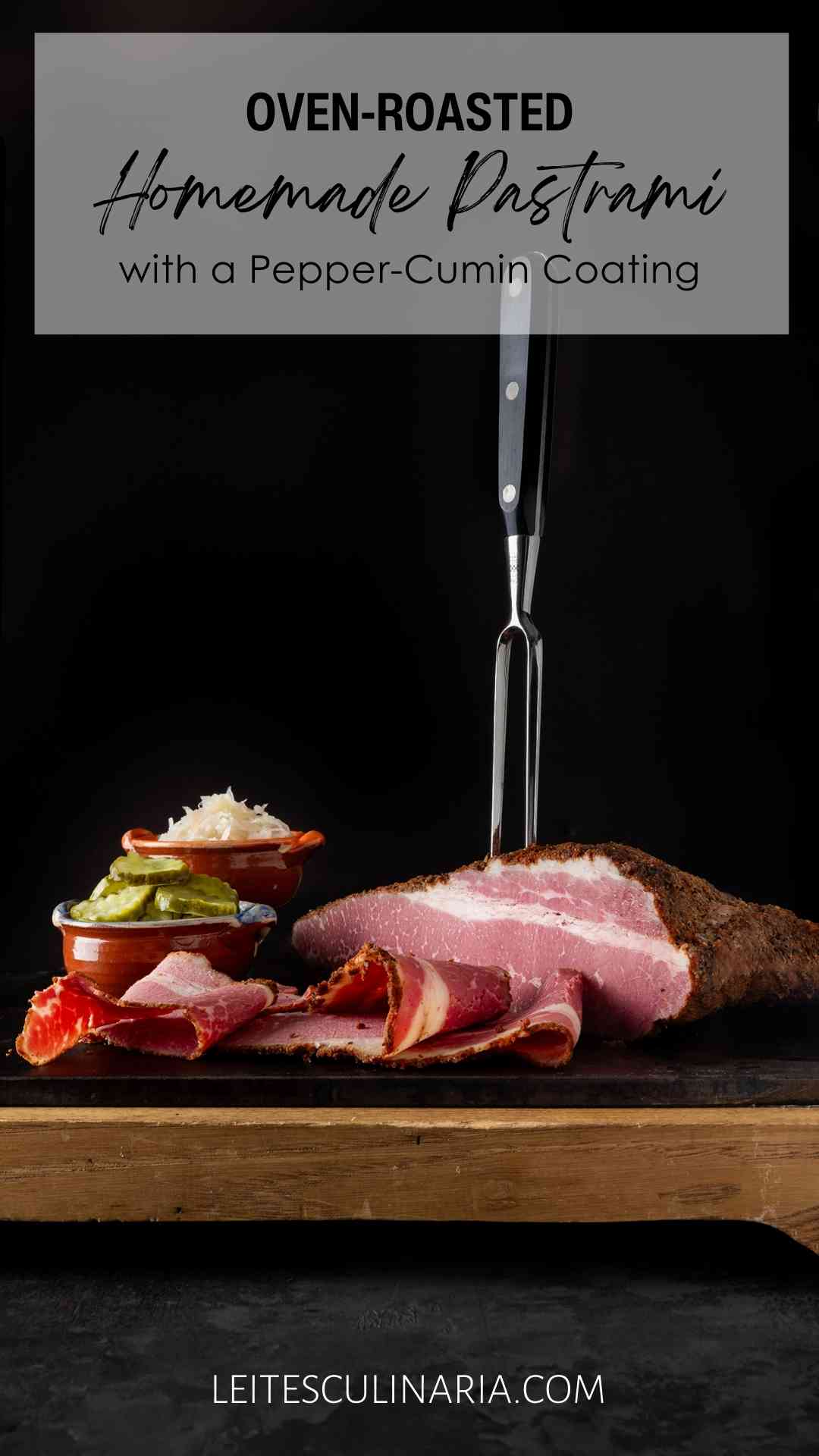
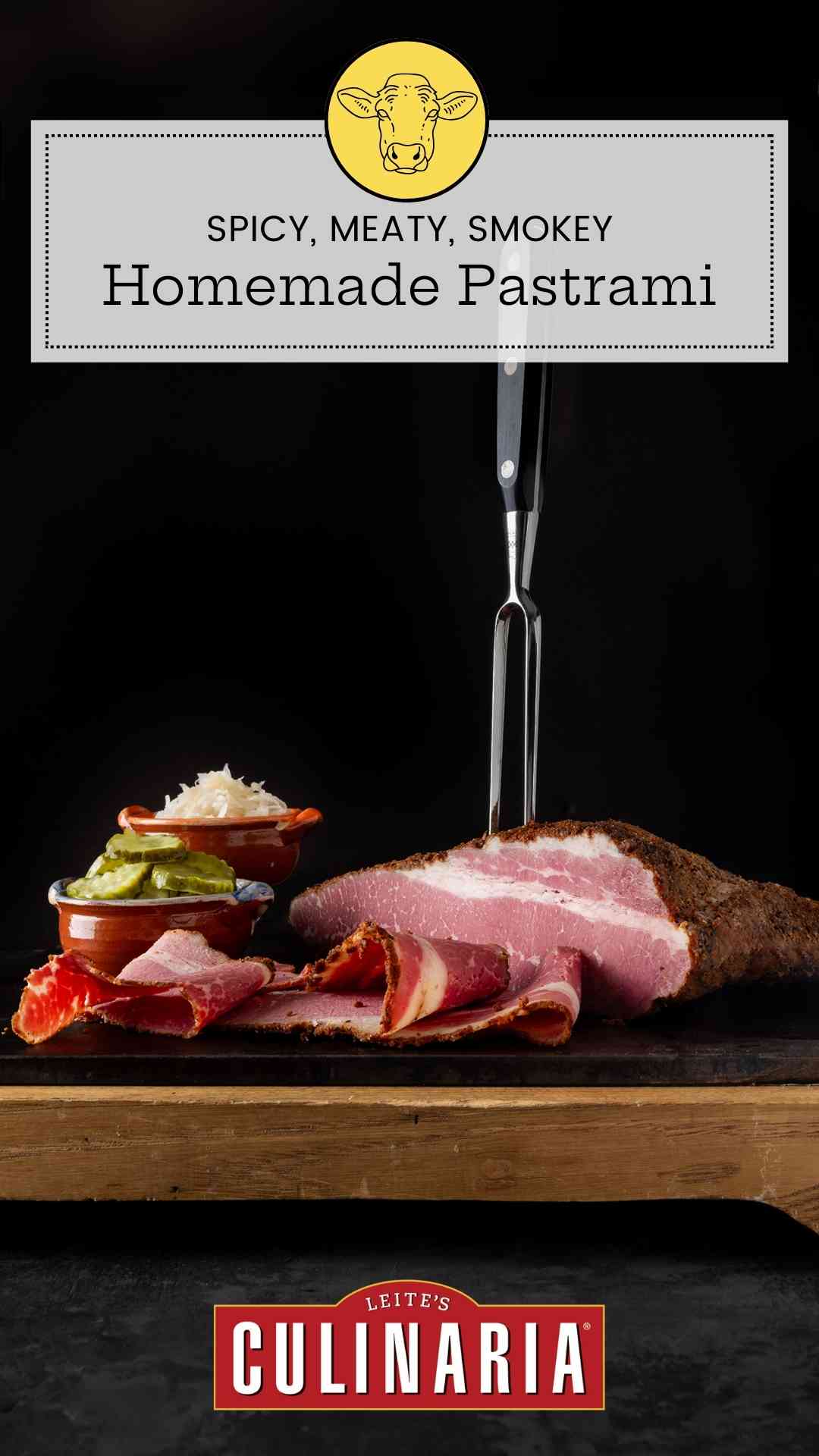

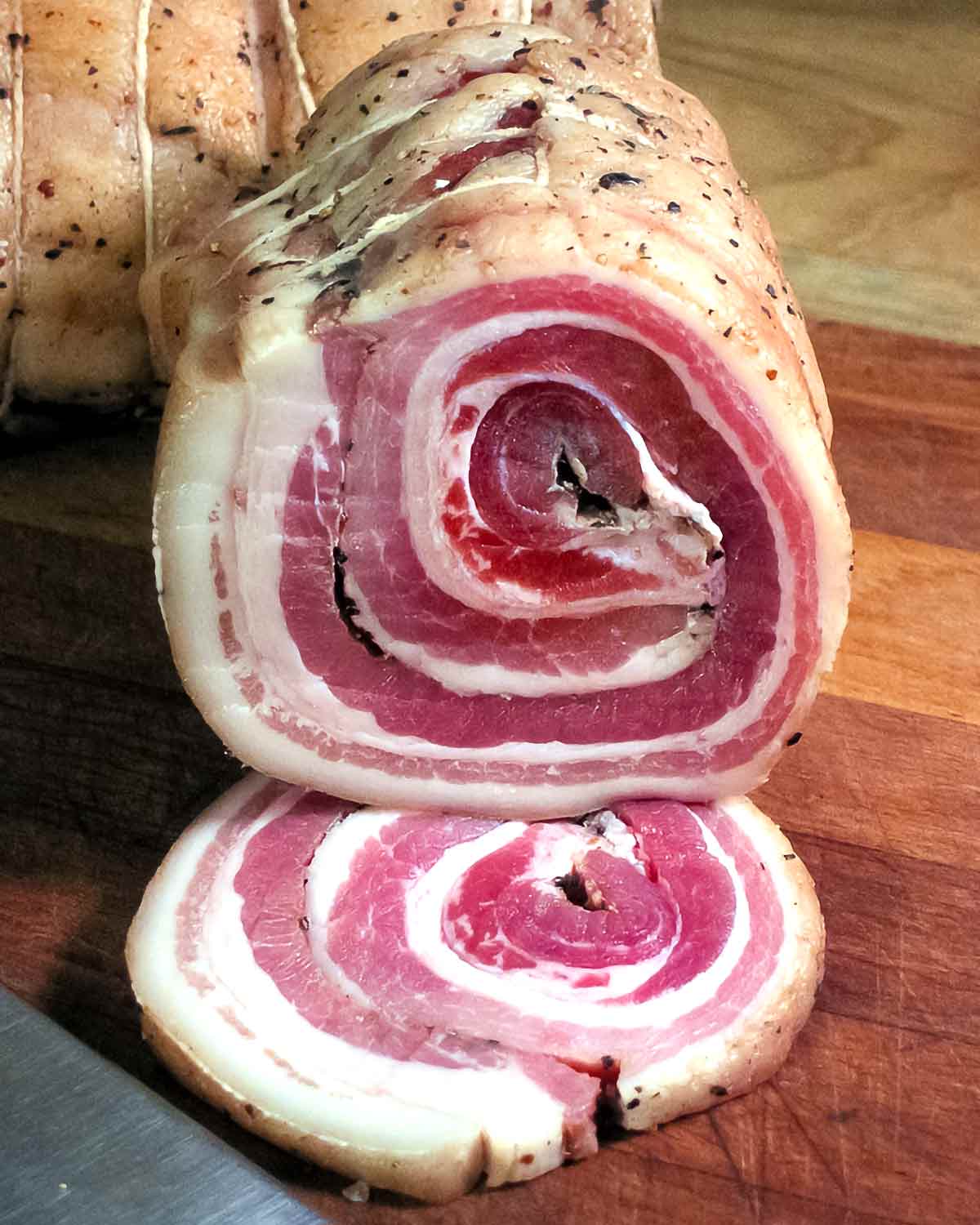
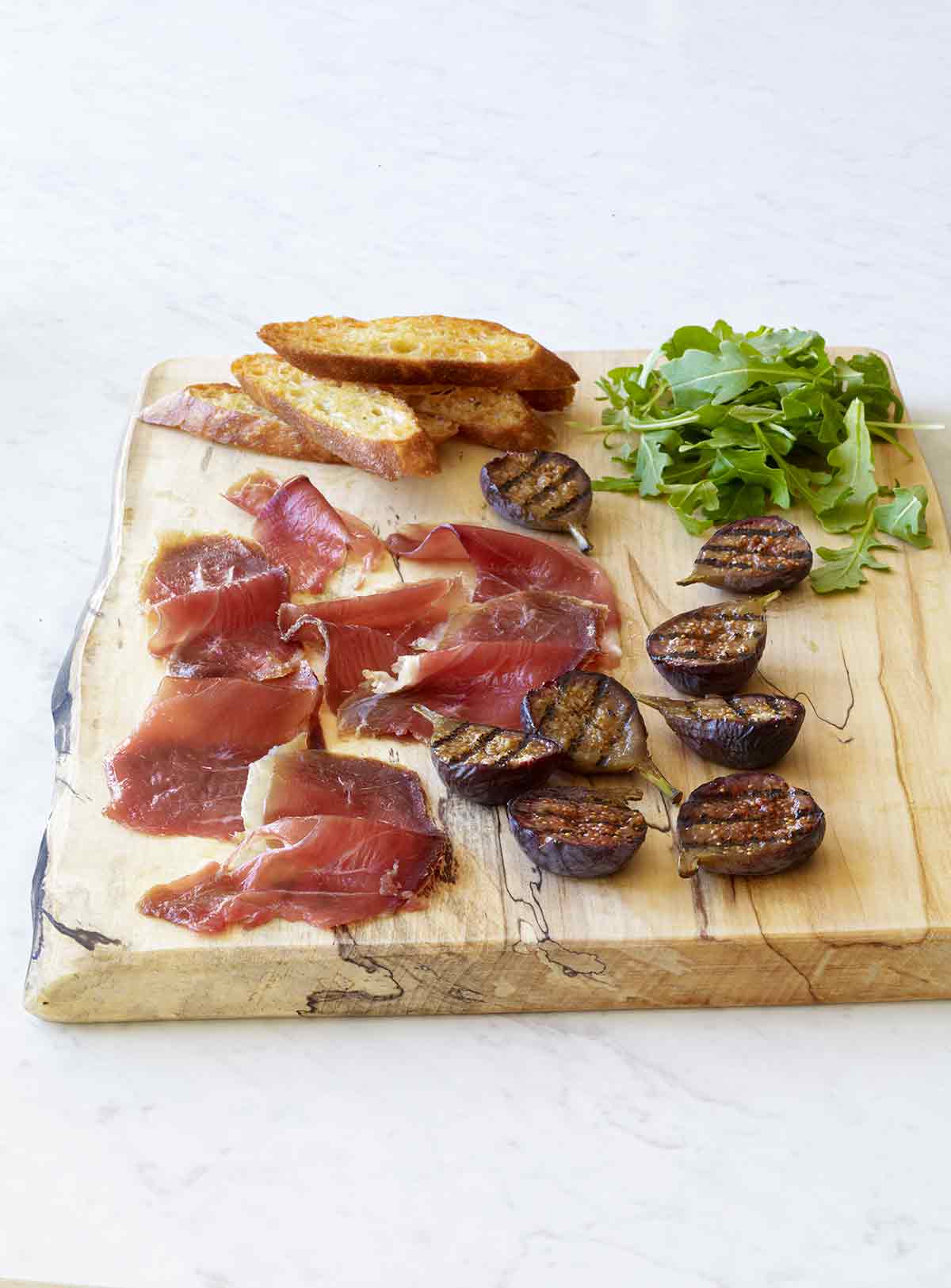
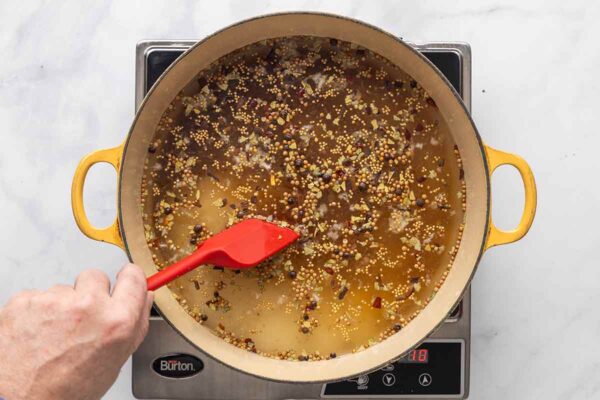
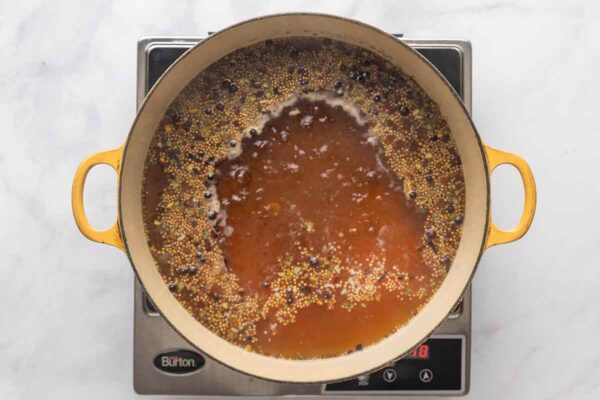
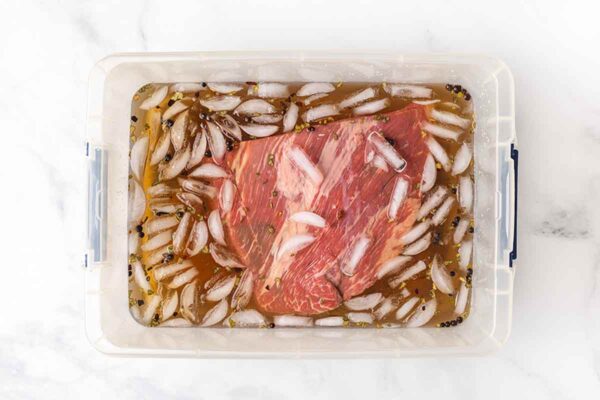
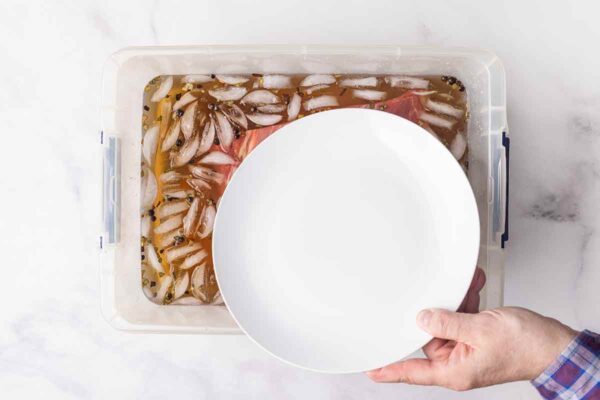
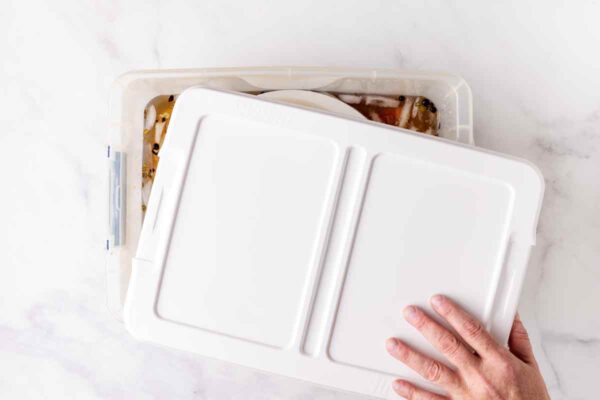
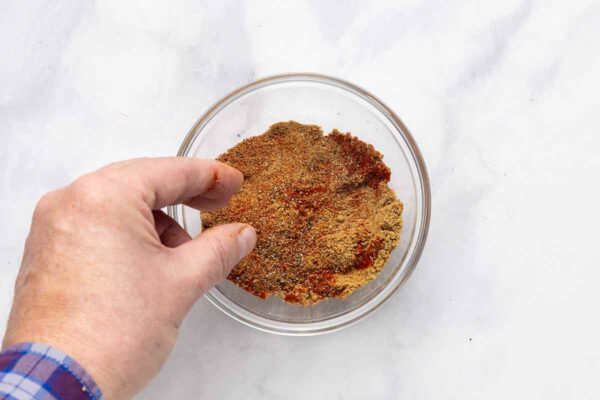
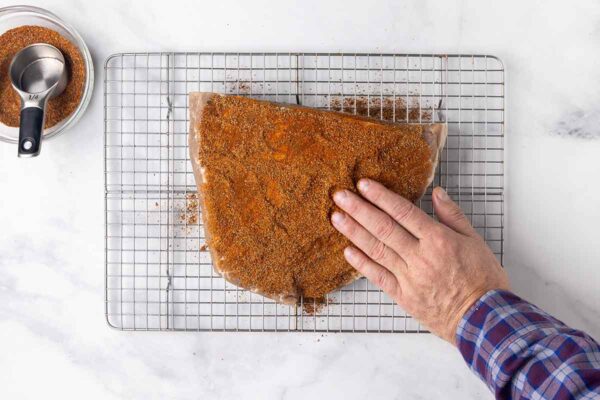
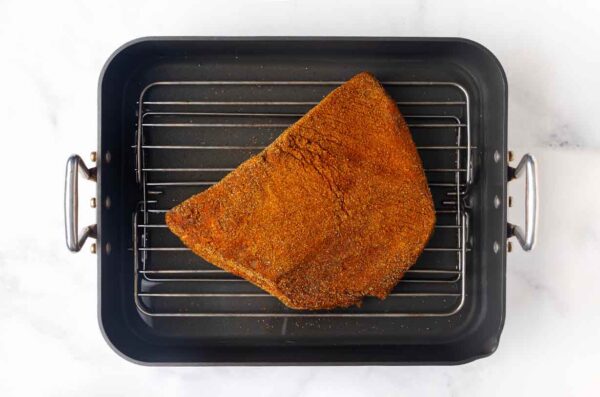













All I can say is WOW! I live in Sarasota FL and good pastrami is hard to find down here so I decided to make my own. I precisely followed the recipe notably doing the smoker variant and using Davids “secret rub” and was absolutely blown away. My neighbor joked that I need to open a deli. I couldn’t be more pleased with the results – Highly recommend!!
Mark, that looks awesome! I’m so glad you liked it and I’m even happier that you tried my version of the mix! Now, all you need to do is bake up some excellent rye bread and you can open up that deli.
How fun was this?! The directions are straightforward and in five days you are noshing on homemade pastrami! I did smoke the brisket before roasting. The only change I would make for my personal preference would be to leave out, or reduce, the brown sugar from the rub. There’s not a deli within 75 miles of me. So thank you! I will be making this often!
Karen, that is some boo-tee-full pastrami. Congrats!!! (Oh, and thanks. I’m hungry again, and I just had dinner…)
I’ve made this 5-6 times to rave reviews each time. For best results make sure there is indeed some fat (some briskets have it completely removed) and don’t skimp on the brine time.
Rob, so glad you liked it–and thanks for the tip!